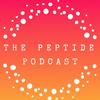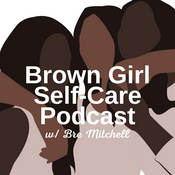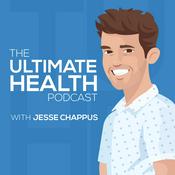172 episodes

Oral Semaglutide
2026/1/01 | 6 mins.
Today, we're diving into an exciting development in obesity treatment—oral semaglutide. Last week, the FDA approved Novo Nordisk's Wegovy pill as the first and only oral GLP-1 for weight loss in adults. This approval is based on results from the OASIS-4 phase 3 clinical trial showing that a once-daily oral version of semaglutide can deliver nearly the same weight loss results as the injectable form. So, what does that really mean for patients and treatment options? Let's break it down. Read the Full Episode Transcript: https://pepties.com/oral-semaglutide/ Dr. Nikki's Qualifications: https://bifat.life/about/ Related Links/Products Mentioned: Peptide Podcast Partners Page https://pepties.com/partners/ BioLongevity Labs (Purchase Peptides online) Use our link and enter COUPON CODE: PEPTIDEPODCAST at checkout to receive 15% off your total order https://go.biolongevitylabs.com/aff_c?offer_id=1&aff_id=1582&aff_sub=PEPTIDEPODCAST Momentous Supplements (we use Creatine, Vital Aminos, Whey Protein) https://crrnt.app/MOME/OqGQOxGA LMNT – More Salt, Not Less. https://elementallabs.refr.cc/default/u/johnjavit Thorne Supplements (we use Omega-3 with CoQ10, Red Yeast Rice, Zinc) https://get.aspr.app/SH1KvW Organifi Creatine and Shilajit Gummies http://rwrd.io/rlbkajm?c MitoZen (methylene blue for Cognitive Function, Anti-Aging, Mental Clarity) https://www.mitozen.com/ref/cnlwiztypt/ For skin and hair health (Copper Tripeptide-1) Visit Luminose by Entera for an exclusive offer for Peptide Podcast listeners! ** Promo code PEPTIDEPODCAST at checkout for 10% off an order or 10% off the first month of a subscribe-and-save. ** https://www.enteraskincare.com/?rfsn=8906839.f93c72 NAD+ Push Patch: https://www.pushpatch.com/ 📚 Free Information: A Comprehensive Guide to the Top 27 Peptide Therapies https://pepties.com/a-comprehensive-guide-to-the-top-27-peptide-therapies-how-they-work-benefits-and-side-effects/ The Ultimate Peptide Therapy Guide https://pepties.com/the-ultimate-peptide-therapy-guide/ Peptide Injections: How Do You Inject Yourself With Peptides? https://pepties.com/guide-to-injecting-peptides/ Top Episodes: Injectable BPC-157 vs Oral BPC-157 https://pepties.com/injectable-bpc-157-vs-oral-bpc-157/ NAD+ https://pepties.com/nad/ FAQs About Tirzepatide https://pepties.com/faqs-about-tirzepatide/

DSIP Peptide Therapy for Sleep
2025/12/25 | 9 mins.
Today we're talking about sleep — something that affects every system in the body, yet is often overlooked until it becomes a problem. Not just how many hours you're in bed, but how deeply you sleep, how well your body restores overnight, and whether you actually wake up feeling rested. We're also going to talk about a peptide that's been getting more attention in the wellness space for sleep support: DSIP, or Delta Sleep–Inducing Peptide. Read the Full Episode Transcript: https://pepties.com/dsip-peptide-therapy-for-sleep/ Dr. Nikki's Qualifications: https://bifat.life/about/ Related Links/Products Mentioned: Peptide Podcast Partners Page https://pepties.com/partners/ BioLongevity Labs (Purchase Peptides online) Use our link and enter COUPON CODE: PEPTIDEPODCAST at checkout to receive 15% off your total order https://go.biolongevitylabs.com/aff_c?offer_id=1&aff_id=1582&aff_sub=PEPTIDEPODCAST Momentous Supplements (we use Creatine, Vital Aminos, Whey Protein) https://crrnt.app/MOME/OqGQOxGA LMNT – More Salt, Not Less. https://elementallabs.refr.cc/default/u/johnjavit Thorne Supplements (we use Omega-3 with CoQ10, Red Yeast Rice, Zinc) https://get.aspr.app/SH1KvW Organifi Creatine and Shilajit Gummies http://rwrd.io/rlbkajm?c MitoZen (methylene blue for Cognitive Function, Anti-Aging, Mental Clarity) https://www.mitozen.com/ref/cnlwiztypt/ For skin and hair health (Copper Tripeptide-1) Visit Luminose by Entera for an exclusive offer for Peptide Podcast listeners! ** Promo code PEPTIDEPODCAST at checkout for 10% off an order or 10% off the first month of a subscribe-and-save. ** https://www.enteraskincare.com/?rfsn=8906839.f93c72 NAD+ Push Patch: https://www.pushpatch.com/ 📚 Free Information: A Comprehensive Guide to the Top 27 Peptide Therapies https://pepties.com/a-comprehensive-guide-to-the-top-27-peptide-therapies-how-they-work-benefits-and-side-effects/ The Ultimate Peptide Therapy Guide https://pepties.com/the-ultimate-peptide-therapy-guide/ Peptide Injections: How Do You Inject Yourself With Peptides? https://pepties.com/guide-to-injecting-peptides/ Top Episodes: Injectable BPC-157 vs Oral BPC-157 https://pepties.com/injectable-bpc-157-vs-oral-bpc-157/ NAD+ https://pepties.com/nad/ FAQs About Tirzepatide https://pepties.com/faqs-about-tirzepatide/

NAD+, GHK-Cu, and the Push Patch
2025/12/18 | 10 mins.
Thanks for listening to The Peptide Podcast. Today, we're diving into the combined power of high-dose NAD+ and GHK-Cu. I'm genuinely excited about the technology behind a product called the Push Patch. It uses iontophoresis— which is a completely non-invasive technology that uses gentle electrical currents to push these ingredients deep into the skin and directly into circulation. But really, this episode isn't about the product itself—it's about what's inside it and how it's delivered. Read the Full Episode Transcript: https://pepties.com/nad-ghk-cu-and-the-push-patch/ Push Patch: https://PushPatch.com Podcast interview mentioned -Mind Pump 2672 - Peptides vs Bioregulators: The Future of Health Optimization w/ Nick Andrews Push Patch conversation starts at 43:50 https://youtu.be/9Kcg1GH9Vk0?si=aunac20OuowAwFsQ&t=2630 $5.99 Derma Roller to 10x the treatment: https://amzn.to/4oWWKUJ Dr. Nikki's Qualifications: https://bifat.life/about/ Related Links/Products Mentioned: Peptide Podcast Partners Page https://pepties.com/partners/ BioLongevity Labs (Purchase Peptides online) Use our link and enter COUPON CODE: PEPTIDEPODCAST at checkout to receive 15% off your total order https://go.biolongevitylabs.com/aff_c?offer_id=1&aff_id=1582&aff_sub=PEPTIDEPODCAST Momentous Supplements (we use Creatine, Vital Aminos, Whey Protein) https://crrnt.app/MOME/OqGQOxGA LMNT – More Salt, Not Less. https://elementallabs.refr.cc/default/u/johnjavit Thorne Supplements (we use Omega-3 with CoQ10, Red Yeast Rice, Zinc) https://get.aspr.app/SH1KvW Organifi Creatine and Shilajit Gummies http://rwrd.io/rlbkajm?c MitoZen (methylene blue for Cognitive Function, Anti-Aging, Mental Clarity) https://www.mitozen.com/ref/cnlwiztypt/ For skin and hair health (Copper Tripeptide-1) Visit Luminose by Entera for an exclusive offer for Peptide Podcast listeners! ** Promo code PEPTIDEPODCAST at checkout for 10% off an order or 10% off the first month of a subscribe-and-save. ** https://www.enteraskincare.com/?rfsn=8906839.f93c72 NAD+ Push Patch: https://www.pushpatch.com/ 📚 Free Information: A Comprehensive Guide to the Top 27 Peptide Therapies https://pepties.com/a-comprehensive-guide-to-the-top-27-peptide-therapies-how-they-work-benefits-and-side-effects/ The Ultimate Peptide Therapy Guide https://pepties.com/the-ultimate-peptide-therapy-guide/ Peptide Injections: How Do You Inject Yourself With Peptides? https://pepties.com/guide-to-injecting-peptides/ Top Episodes: Injectable BPC-157 vs Oral BPC-157 https://pepties.com/injectable-bpc-157-vs-oral-bpc-157/ NAD+ https://pepties.com/nad/ FAQs About Tirzepatide https://pepties.com/faqs-about-tirzepatide/

GLP-1 Therapies Strategies: Weekly, Micro-Dose, and Maintenance
2025/12/11 | 9 mins.
Thanks for listening to The Peptide Podcast. Today, we're diving into GLP‑1 therapies, including dual GIP/GLP‑1 agonists and the emerging triple agonists, and talking about how these peptides are typically dosed, what people are experimenting with, and what the research — or real-world experience — tells us so far. Read the Full Episode Transcript: https://pepties.com/glp-1-therapies-strategies-weekly-micro-dose-and-maintenance/ Dr. Nikki's Qualifications: https://bifat.life/about/ Related Links/Products Mentioned: Peptide Podcast Partners Page https://pepties.com/partners/ BioLongevity Labs (Purchase Peptides online) Use our link and enter COUPON CODE: PEPTIDEPODCAST at checkout to receive 15% off your total order https://go.biolongevitylabs.com/aff_c?offer_id=1&aff_id=1582&aff_sub=PEPTIDEPODCAST Momentous Supplements (we use Creatine, Vital Aminos, Whey Protein) https://crrnt.app/MOME/OqGQOxGA LMNT – More Salt, Not Less. https://elementallabs.refr.cc/default/u/johnjavit Thorne Supplements (we use Omega-3 with CoQ10, Red Yeast Rice, Zinc) https://get.aspr.app/SH1KvW Organifi Creatine and Shilajit Gummies http://rwrd.io/rlbkajm?c MitoZen (methylene blue for Cognitive Function, Anti-Aging, Mental Clarity) https://www.mitozen.com/ref/cnlwiztypt/ For skin and hair health (Copper Tripeptide-1) Visit Luminose by Entera for an exclusive offer for Peptide Podcast listeners! ** Promo code PEPTIDEPODCAST at checkout for 10% off an order or 10% off the first month of a subscribe-and-save. ** https://www.enteraskincare.com/?rfsn=8906839.f93c72 📚 Free Information: A Comprehensive Guide to the Top 27 Peptide Therapies https://pepties.com/a-comprehensive-guide-to-the-top-27-peptide-therapies-how-they-work-benefits-and-side-effects/ The Ultimate Peptide Therapy Guide https://pepties.com/the-ultimate-peptide-therapy-guide/ Peptide Injections: How Do You Inject Yourself With Peptides? https://pepties.com/guide-to-injecting-peptides/ Top Episodes: Injectable BPC-157 vs Oral BPC-157 https://pepties.com/injectable-bpc-157-vs-oral-bpc-157/ NAD+ https://pepties.com/nad/ FAQs About Tirzepatide https://pepties.com/faqs-about-tirzepatide/

A New Era for Menopause Care — What the Removal of the Black‑Box Warning Means
2025/12/04 | 5 mins.
Thanks for listening to The Peptide Podcast. Today, we're diving into some exciting news in menopause care. The FDA and the Department of Health and Human Services just announced a major update that could shift how hormone therapy is prescribed, understood, and used by people going through menopause now or in the future. Read the Full Episode Transcript: https://pepties.com/a-new-era-for-menopause-care-what-the-removal-of-the-blackbox-warning-means/ Dr. Nikki's Qualifications: https://bifat.life/about/ Related Links/Products Mentioned: Peptide Podcast Partners Page https://pepties.com/partners/ BioLongevity Labs (Purchase Peptides online) Use our link and enter COUPON CODE: PEPTIDEPODCAST at checkout to receive 15% off your total order https://go.biolongevitylabs.com/aff_c?offer_id=1&aff_id=1582&aff_sub=PEPTIDEPODCAST Momentous Supplements (we use Creatine, Vital Aminos, Whey Protein) https://crrnt.app/MOME/OqGQOxGA LMNT – More Salt, Not Less. https://elementallabs.refr.cc/default/u/johnjavit Thorne Supplements (we use Omega-3 with CoQ10, Red Yeast Rice, Zinc) https://get.aspr.app/SH1KvW Organifi Creatine and Shilajit Gummies http://rwrd.io/rlbkajm?c MitoZen (methylene blue for Cognitive Function, Anti-Aging, Mental Clarity) https://www.mitozen.com/ref/cnlwiztypt/ For skin and hair health (Copper Tripeptide-1) Visit Luminose by Entera for an exclusive offer for Peptide Podcast listeners! ** Promo code PEPTIDEPODCAST at checkout for 10% off an order or 10% off the first month of a subscribe-and-save. ** https://www.enteraskincare.com/?rfsn=8906839.f93c72 📚 Free Information: A Comprehensive Guide to the Top 27 Peptide Therapies https://pepties.com/a-comprehensive-guide-to-the-top-27-peptide-therapies-how-they-work-benefits-and-side-effects/ The Ultimate Peptide Therapy Guide https://pepties.com/the-ultimate-peptide-therapy-guide/ Peptide Injections: How Do You Inject Yourself With Peptides? https://pepties.com/guide-to-injecting-peptides/ Top Episodes: Injectable BPC-157 vs Oral BPC-157 https://pepties.com/injectable-bpc-157-vs-oral-bpc-157/ NAD+ https://pepties.com/nad/ FAQs About Tirzepatide https://pepties.com/faqs-about-tirzepatide/
More Health & Wellness podcasts
Trending Health & Wellness podcasts
About The Peptide Podcast
Listen to The Peptide Podcast, Get Sleepy: Sleep meditation and stories and many other podcasts from around the world with the radio.net app

Get the free radio.net app
- Stations and podcasts to bookmark
- Stream via Wi-Fi or Bluetooth
- Supports Carplay & Android Auto
- Many other app features
Get the free radio.net app
- Stations and podcasts to bookmark
- Stream via Wi-Fi or Bluetooth
- Supports Carplay & Android Auto
- Many other app features


The Peptide Podcast
download the app,
start listening.

































